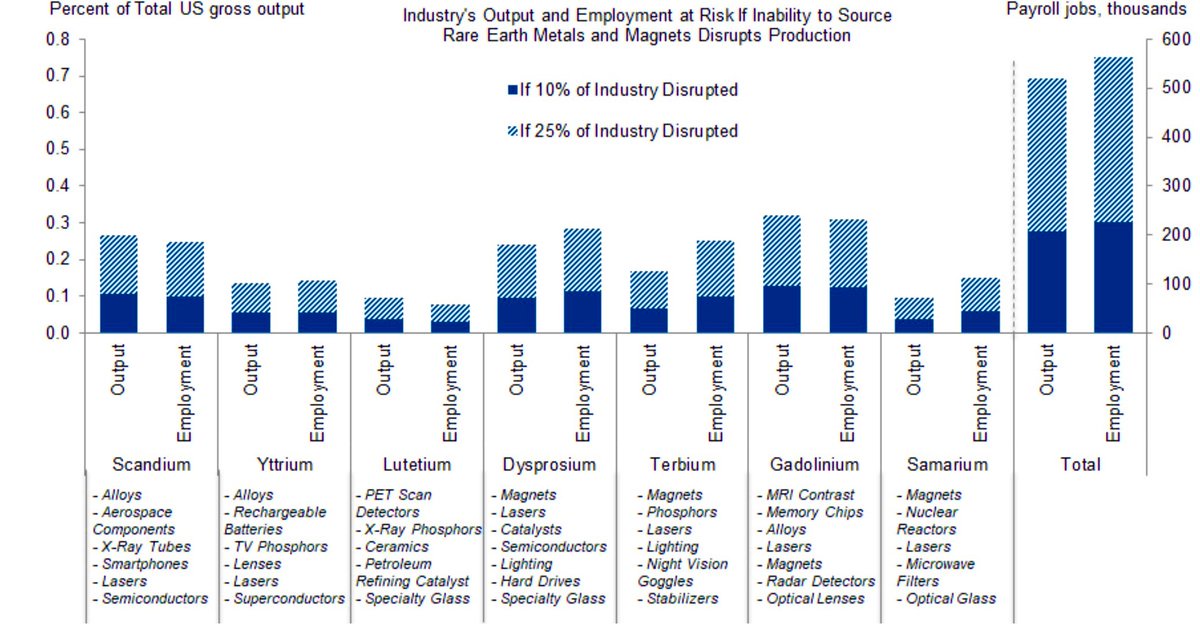
This chart shows how much the U.S. economy relies on rare earth metals and how risky that dependence has become. It measures what could happen to American industries and jobs if the supply of these metals were cut off. The solid blue bars show what happens if 10% of the industries that use them are disrupted, and the striped bars show the impact if 25% are hit.
Each metal plays an important role in technology and manufacturing. Scandium is used in aircraft parts and semiconductors. Yttrium helps make rechargeable batteries and lasers. Lutetium is used in medical scanners and special glass. Dysprosium, terbium, and samarium are key for the strong magnets that power electric cars, wind turbines, and high-tech devices. Gadolinium is used in MRI machines and computer memory chips. Basically, these metals keep a lot of modern industries running.The chart shows that even a small shortage could cause serious problems. If just 10% of the supply is disrupted, it could affect up to 0.2% of total U.S. output and jobs in certain sectors. If 25% is disrupted, the impact could reach 0.6%, which equals hundreds of thousands of jobs and billions in lost production. That might not sound huge, but in critical areas like clean energy, semiconductors, and defense, it could cause major slowdowns.This matters because most rare earth metals still come from China. If trade tensions rise or exports are restricted, U.S. industries could struggle to make everything from electric vehicles to advanced medical equipment. That’s why protecting these supply chains is becoming such a big issue.The takeaway is simple: rare earth metals might not be something most people think about, but they’re essential for the future of technology and the economy. If the U.S. doesn’t build safer and more local supply sources soon, even a small disruption could create big economic and national security problems.Source: StockMarket.News
The copyright of this article belongs to the original author/organization.
The views expressed herein are solely those of the author and do not reflect the stance of the platform. The content is intended for investment reference purposes only and shall not be considered as investment advice. Please contact us if you have any questions or suggestions regarding the content services provided by the platform.


